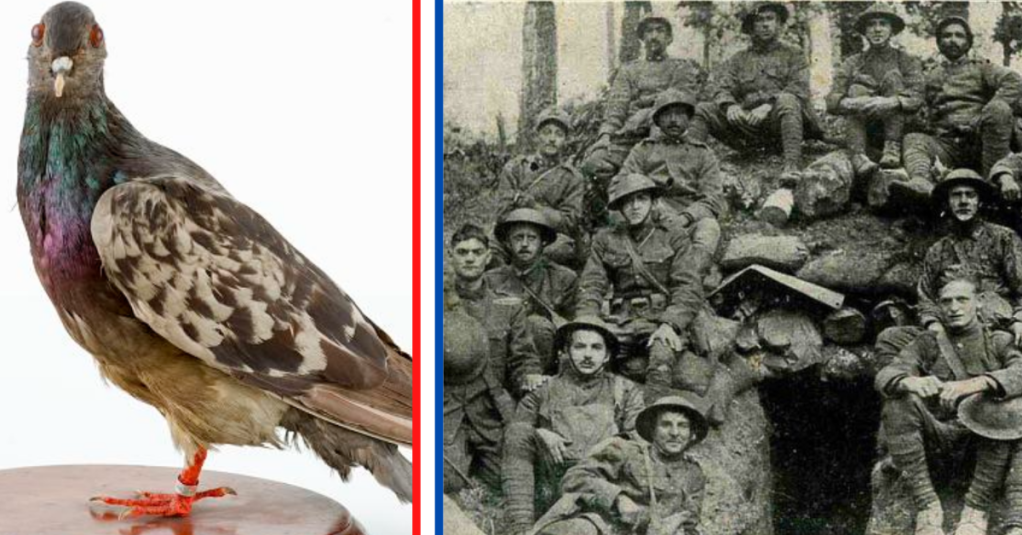By fall of 1918, the Allies were pushing back the Germans all along the Western Front. In September, the Allies launched the Meuse-Argonne Offensive, the final offensive of World War I. But the Germans were not yet beaten and were still fighting to bring a satisfactory end to the war, as the men of the 77th Division were soon to find out.
The 308th Infantry Regiment of the 77th Division’s 154th Infantry Brigade were assigned to take a mill as well as vital road and rail ways that would deny Germans in other sectors the ability to resupply. All along the line a no retreat order was in effect. Major General Alexander, commander of the 77th Division, was particularly adamant, insisting that anyone calling out to fall back should be shot.

Maj. Charles Whittlesey, commanding 1st Battalion, 308th Infantry, took this to heart. Whittlesey, a Harvard educated lawyer, would lead his men from the front. When the 308th‘s attack began at 7 am on October 2, 1918, American forces all along the front advanced towards their objectives. Whittlesey was leading a force consisting of six companies (A, B, C, E, G, H) from the 308th, K company from 307th, as well as C and D companies of the 306th Machine Gun Battalion. By the night of October 2nd, Whittlesey’s force reached and secured their objective, Hill 198, when disaster struck on their flanks.
Just as Whittlesey received word that his men captured Hill 198, he was disturbed by just how quiet it was around his position. When he realized he could not hear action from where the 307th was supposed to be, he remarked later “either they had broken through the line as well and reached their objective over there, or they had been licked and fallen back. The former would be good news for the 308th … The latter, however, was unthinkable; orders forbade it.” Also unknown to the men of the 308th was that a strong German counterattack had driven back French and American forces securing the 77th‘s flanks, leaving Whittlesey’s command isolated behind German lines.

The men began digging in a position that came to be known as ‘the pocket’ on top of Hill 198. Though it was defensible, the Germans held a nearby hill that overlooked the pocket, as well as a position in a ravine that cut off the path of retreat. The next day Whittlesey sent out numerous runners in an attempt to reestablish contact with friendly forces but not a single one returned. Whittlesey also sent carrier pigeons but they were shot out of the sky by the Germans. The Americans were completely cut-off and surrounded. An attempt by a single company to break out failed with heavy casualties.
On October 4th the situation worsened for the isolated men. Besides German attacks they were also subjected to friendly fire. History is unclear how exactly it happened but what is known is that the men of the Lost Battalion came under fire from their own artillery. Virtually out of options, Maj. Whittlesey wrote a note and sent out his final carrier pigeon, Cher Ami, to stop the shelling of his own troops.
“We are along the road parallel to 276.4. Our own artillery is dropping a barrage directly on us. For heaven’s sake, stop it.”
The bird flew off through the artillery barrage and was then targeted by the Germans. Whittlesey watched as the bird took fire and fluttered to the ground. As his heart sank, he saw Cher Ami regain flight and fly past the Germans on its way to headquarters. When Cher Ami arrived at the 77th Division headquarters it was found that the pigeon had been shot through the breast, blinded in one eye, and the leg holding the message was hanging on by a tendon but Whittlesey’s message had arrived ending the friendly fire.

Even though the artillery fire stopped, the Americans still did not know exactly where the Lost Battalion was. To make matters worse, the Germans continued attempting to annihilate the Americans and attempts to resupply the force by air were unsuccessful. Their supplies dwindling. The only water source required crawling under fire to a creek. Bandages were being removed from the dead to be used on the wounded. The Lost Battalion held out for nearly a week before they were finally relieved by forces from the U.S. 82nd Division. Of the 554 men who were originally encircled, only 194 were able to walk out on their own after the battle, the rest had all been killed, wounded, or captured.
The Lost Battalion received five Medals of Honor, including Maj. Whittlesey’s, along with 28 Distinguished Service Crosses. Whittlesey was promoted to Lieutenant Colonel immediately upon returning to American lines. In 1921, he and other Medal of Honor recipients were pallbearers for the Unknown Soldier. Unfortunately, Whittlesey was deeply troubled by his experiences and disappeared from a passenger ship in November 1921 in an apparent suicide.
Cher Ami, the carrier pigeon that saved the men from their own artillery, was awarded the French Croix de Guerre with an Oak Leaf Cluster for heroic service at Verdun and in the stopping the artillery barrage in the Argonne Forest. The bird died in 1919 and was stuffed for display at the Smithsonian.
The story of the Lost Battalion was made into a movie in 1917 and again in 2001.



